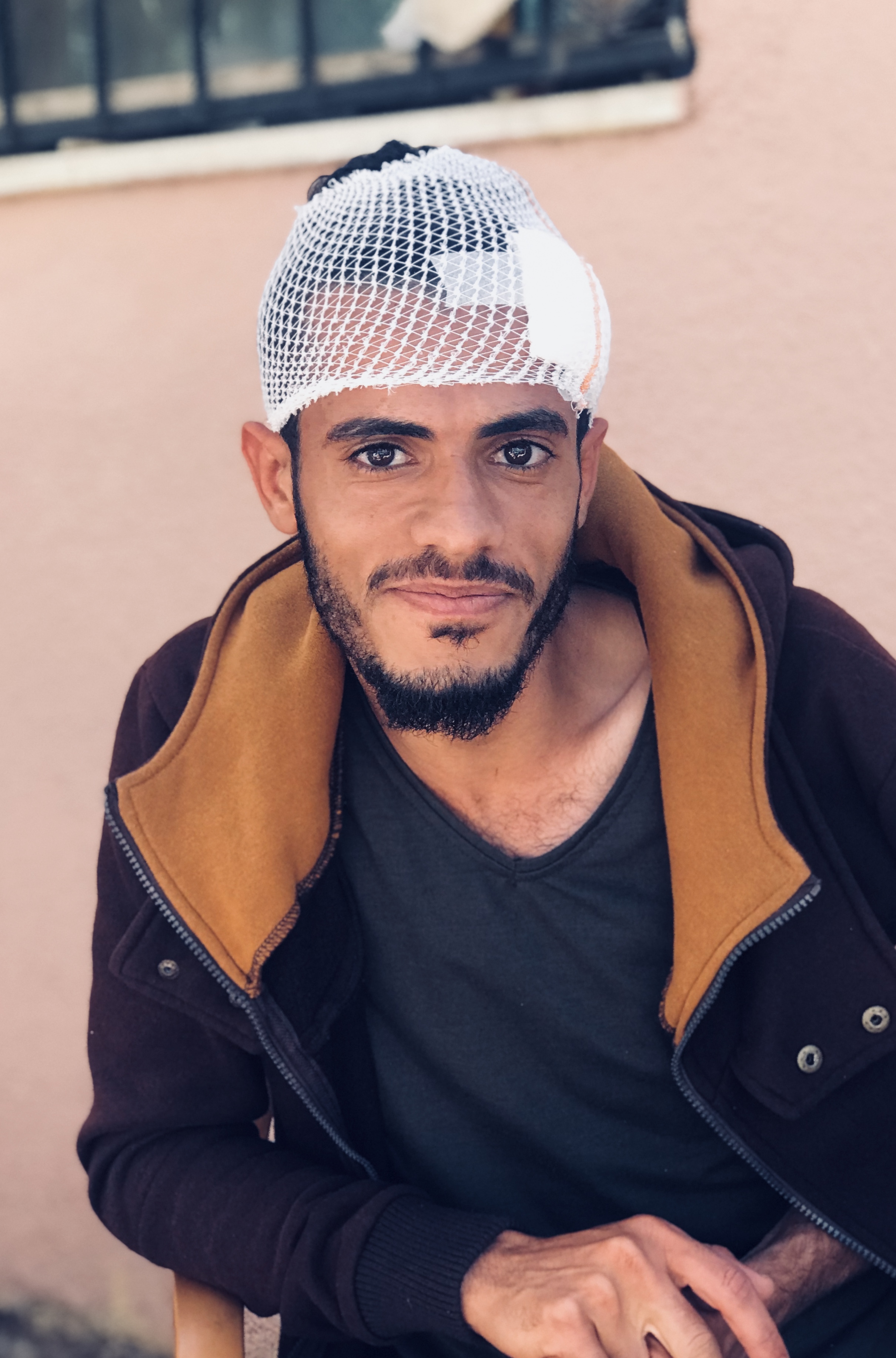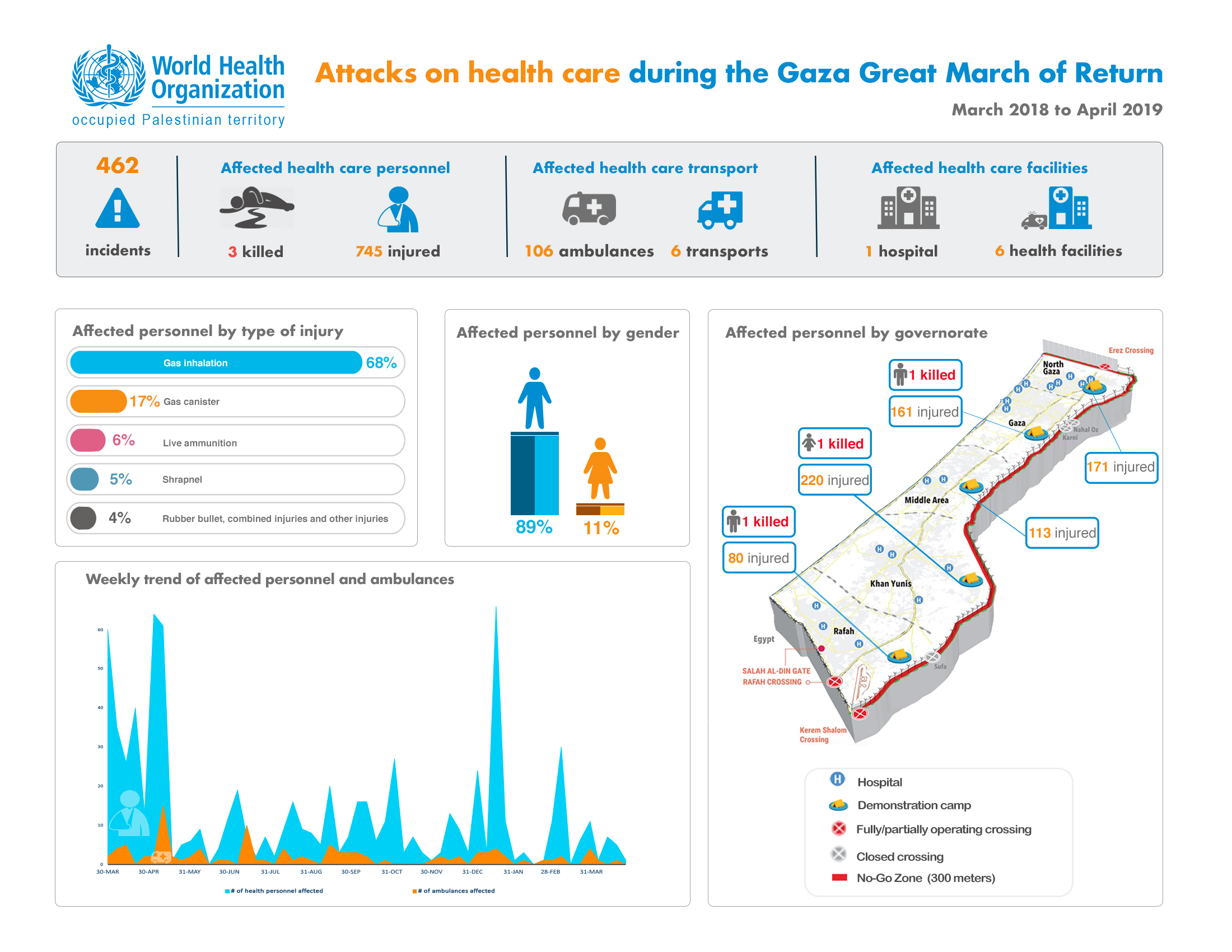 Mohamed Abu Taema. Credit: WHO20 May 2019 – Mohamed, a 24-year-old first responder, was injured during demonstrations in Khan Younis, Gaza, on Friday 10 March. He had seen a child of approximately 12 years injured from gas inhalation near the Gaza fence, and had gone forward to treat him and bring him to the nearby medical point of the Ministry of Health:
Mohamed Abu Taema. Credit: WHO20 May 2019 – Mohamed, a 24-year-old first responder, was injured during demonstrations in Khan Younis, Gaza, on Friday 10 March. He had seen a child of approximately 12 years injured from gas inhalation near the Gaza fence, and had gone forward to treat him and bring him to the nearby medical point of the Ministry of Health:
“I went forward and carried him back [away from the Gaza fence]. Then I stopped at a distance of 150 metres with my colleague to provide first aid to the child. After we had finished, I stood and was hit by a gas canister on the left side my forehead. They took me to the medical point and then transferred me by ambulance to the European Gaza Hospital. I lost consciousness in the ambulance on the way to hospital.”
He sustained a fracture and bleeding into his skull, needing 5 stitches in his head and admission to hospital for investigations and observation.
Mohamed is one of 35 first responders volunteering with Watan medical team. The team was established at the start of the Great March of Return demonstrations on 30 March 2018. Mohamed joined the team in August 2018, after an intensive course on the provision of first aid in the field.
WHO met Mohamed on Monday 13 May, when he was being discharged from the European Gaza Hospital. His colleagues from Watan team had come to help him. Gaza volunteers work at great personal risk to treat injured persons. Since demonstrations as part of Gaza’s Great March of Return began on 30 March 2018, until the end of April 2019, 3 health workers have been killed and 745 injured in 462 recorded incidents against health staff and facilities.
This is Mohamed’s fourth injury from a gas canister since he began work with Watan team. He also sustained countless injuries from gas inhalation, including one occasion where he lost consciousness and was taken to hospital as a result of gas inhalation. Mohamed’s colleagues, too, discussed the extent of injuries they sustained during protests and their frustration that violence towards them continues. The leader of Mohamed’s field team showed a scar on his chest from a previous gas canister injury. He reported that this injury was one of several injuries he had sustained and not reported.
Mohamed lives in area of Khan Younis with his wife, 7-month-old boy and extended family. Like almost three quarters of young people in Gaza, Mohamed has been unable to find work. He studied psychology for one year, but he had to stop when he could no longer afford the fees or transportation to reach his university.
“This work, I love it. Through this work, I’m helping the people of my nation. I have one goal, even when I’m injured – giving first aid assistance to others helps me to recover. That’s the most important thing. If the whole world thought like me, no one would be left injured! Beyond going [to the demonstrations] as a paramedic, I go normally – like all people. I’ve been discharged from the hospital, but on Wednesday [15 May] I’m going to the field… I dream of return, like all Palestinians.”
Attacks on health care during the Gaza Great March of Return




